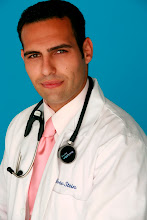A study from Norway (Acta Neurol Scand 2007;Nov.20; Sjaastad O, Bakketeig LS) showed that about 4% of the population will have this type of headache. Taking medications to cover the pain will not ultimately correct a mechanical neck problem.
The symptoms of a cervicogenic headache are as follows: one-sided head pain and same side shoulder and arm pain. Patients also have limited mobility of the neck region. Rarely a patient may also have a migraine trait such as nausea, vomiting, or throbbing sensations. Because of these different signs from a typical migraine headache a physician may have overlooked the neck as a potential source for the cause of your head pain. Self-diagnosing your headache can be even worse since potentially serious causes of your head pain, such as high blood pressure may go undiscovered and left untreated. In any case it’s unlikely that your headache has been caused by a deficiency of pain pills in your diet. There are also unintended side effects that have to be considered when weighing any health care option.
Another study from Norway (Funct Neurol 2007;22:145; Drottning M, Staff PH, Sjaastad O) looked at causes of cervicogenic headaches, specifically whiplash injuries of the neck. In this study, 587 whiplash patients were followed over a six-year period. About 8% of the whiplash sufferers developed a cervicogenic headache six weeks after the initial trauma. Thirty-five percent of these patients were still suffering six years later.
Our clinic specializes in the treatment spine-caused head pain especially cervicogenic headache. To determine this we have to perform a comprehensive examination of your spine to see if sprains of your cervical or thoracic joints are present and review whether you’ve suffered a trauma in years past that could have affected the posture and mobility of these delicate spinal structures.
For patients who do not go down the road of medications for treating their head pain chiropractic care can be a more healthful option.

No comments:
Post a Comment